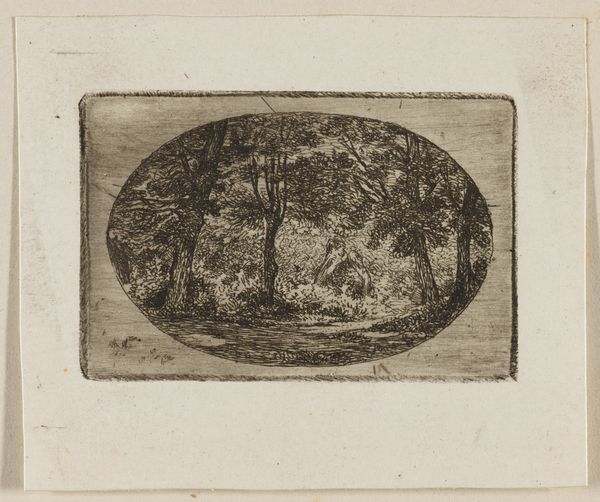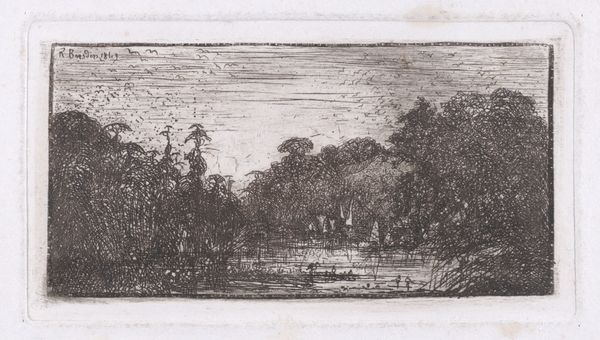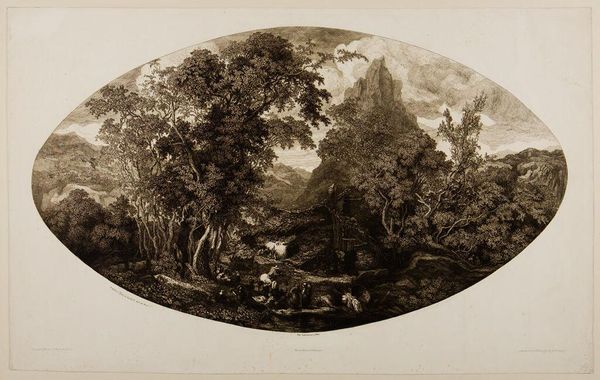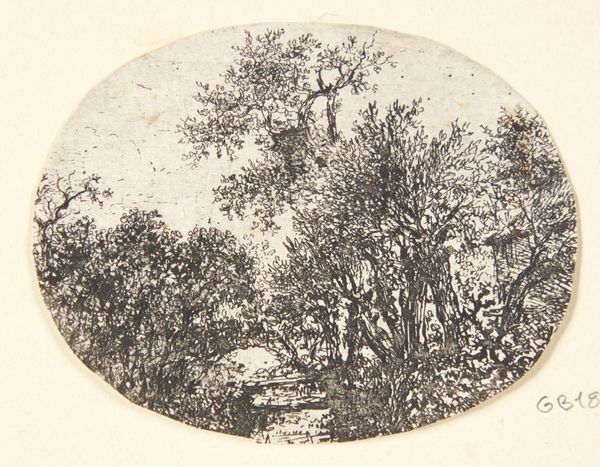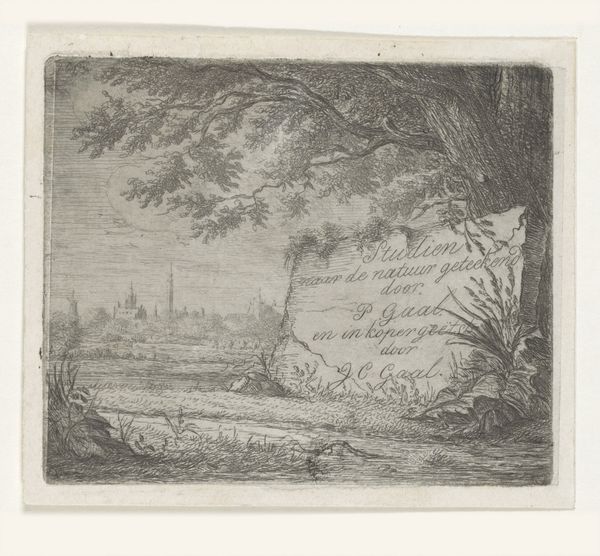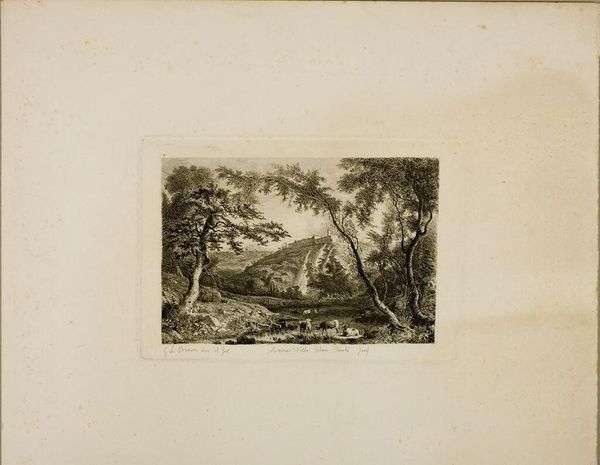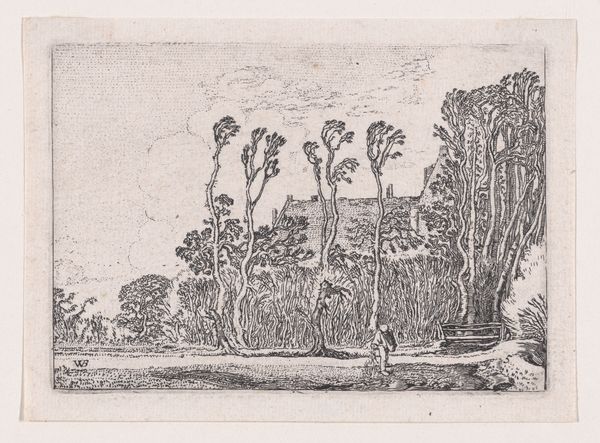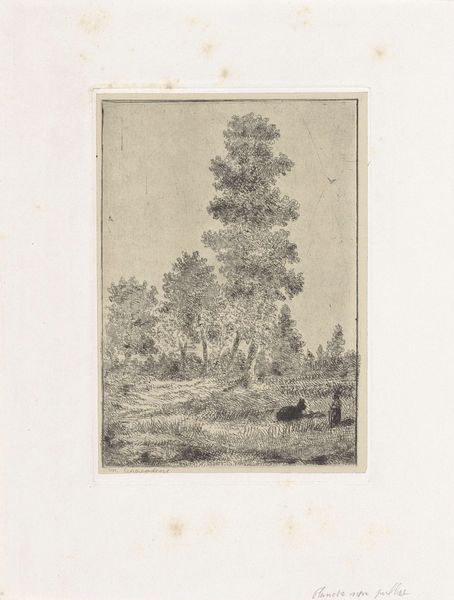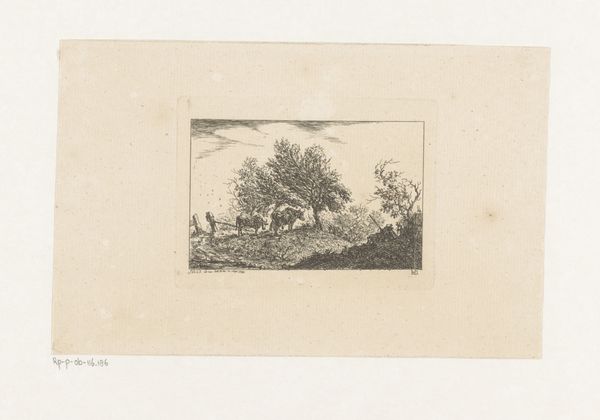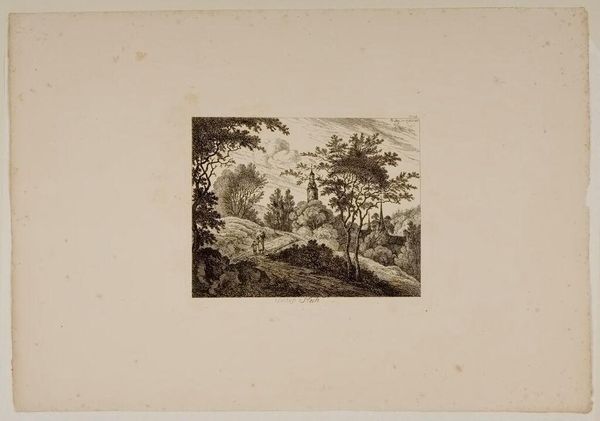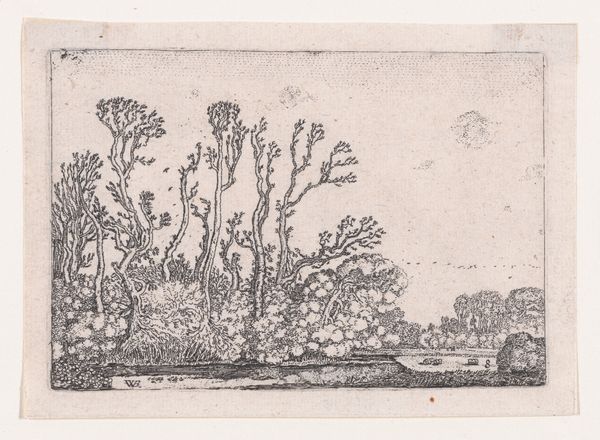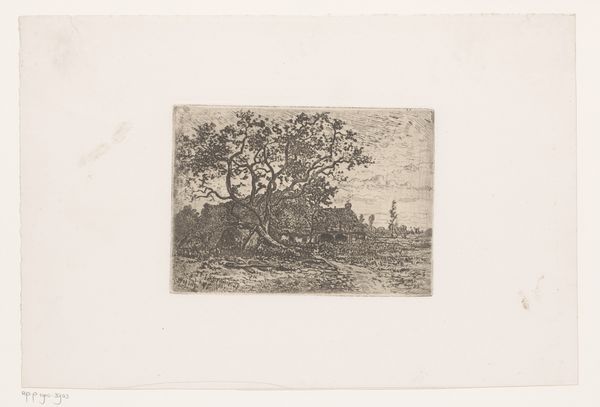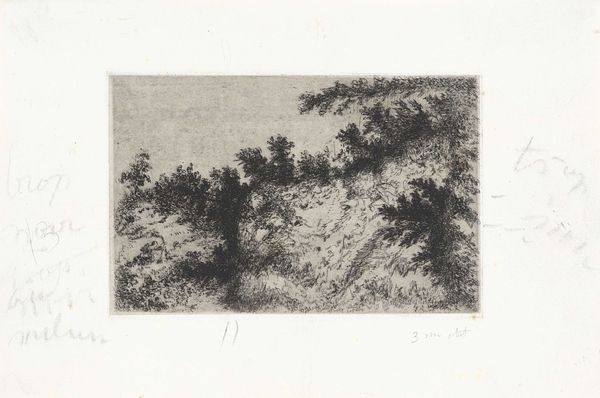
Dimensions: height 46 mm, width 60 mm
Copyright: Rijks Museum: Open Domain
Curator: This is "Landschap met boomgroep" which translates to Landscape with grove of trees, made by Arnoud Schaepkens between 1831 and 1904. It seems to be a print or etching. Editor: There's something incredibly evocative about the dense, almost scribbled texture. It’s a small artwork, and at first, it seemed gloomy but then, I saw movement in the lines. It really reminds me of walking in a misty landscape and catching fleeting impressions of foliage. Curator: Indeed. It’s vital to remember that during Schaepkens' time, landscape art often symbolized more than just the natural world. These landscapes reflect ideas about national identity, spiritual connection to the land, and also, sometimes, the inherent power dynamics of land ownership. How does knowing the social structures of this era shape how you see this landscape, now? Editor: Well, I do start wondering about the access to resources it took to produce even what appears to be a simple print. The materials, the tools, the expertise—none of that existed in a vacuum. We should acknowledge that labor and those processes that went into its creation. Curator: Precisely. The labor and class play important roles in our perception and relationship with the land itself. We, as consumers, viewers are complicit. Considering that the artist was active for much of the 19th century, during a period of considerable socio-political upheaval, how much of what he has included could we deem sociopolitical? Editor: I am now struck by the artist’s intentional choices regarding tools and the printmaking. There's an immediacy and replicability here, speaking perhaps to ideas about democratizing images, distributing landscapes to a broader audience that could be aligned with ideas about access, or simply profit, the accessibility of mass-produced items, during the industrial age. Curator: Absolutely, and by delving into the period that he has lived through, you come to question all the different levels of intention, class, mass production, with a deceptively simple landscape drawing. Editor: I guess this approach really grounds us in how even a quiet, subdued image can be linked to materials, labour, and production. This has prompted me to think about it in ways I had not anticipated! Curator: Absolutely. Seeing art through this lens of its production, socio-economic implications, is equally powerful.
Comments
No comments
Be the first to comment and join the conversation on the ultimate creative platform.
